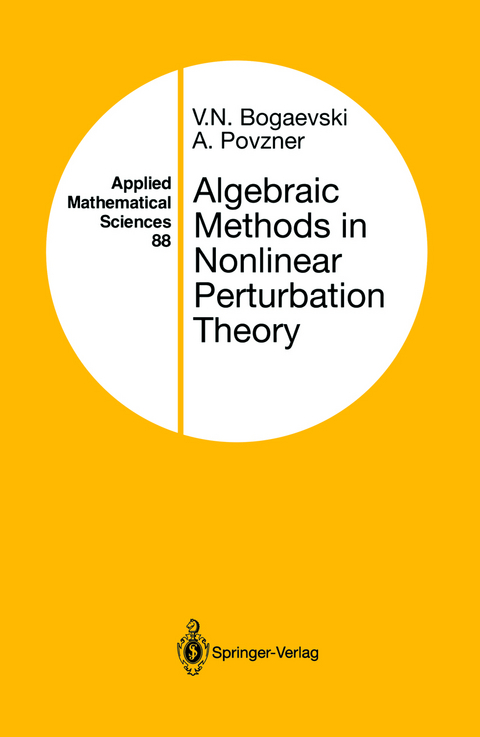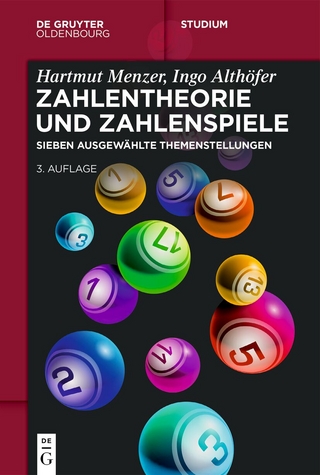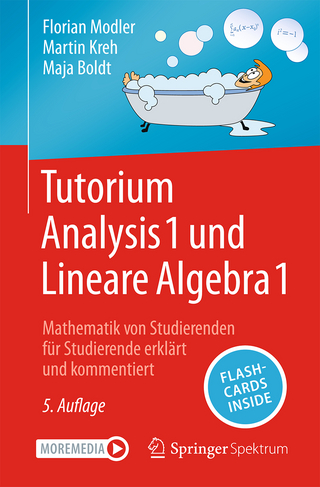
Algebraic Methods in Nonlinear Perturbation Theory
Springer-Verlag New York Inc.
978-0-387-97491-0 (ISBN)
1 Matrix Perturbation Theory.- 1.1 Perturbation Theory for a Linear Operator.- 1.2 Main Formulas.- 1.3 Diagonal Leading Operator.- 1.4 General Case. The Normal Form of the Matrix of the Operator M.- 1.5 Nilpotent Leading Operator. The Reconstruction Problem.- 2 Systems of Ordinary Differential Equations with a Small Parameter.- 2.1 Passage to the Linear Problem. Change of Variables Operator.- 2.2 General Formulation of the Perturbation Theory Problem.- 2.3 Canonical Form of First Order Operator X0.- 2.4 An Algebraic Formulation of the Perturbation Theory Problem.- 2.5 The Normal Form of an Operator with Respect to a Nilpotent X0. The Reconstruction Problem.- 2.6 A Connection with N. N. Bogolyubov’s Ideas.- 2.7 The Motion Near the Stationary Manifold.- 2.8 Hamiltonian Systems.- 3 Examples.- 3.1 Example: The Pendulum of Variable Length.- 3.2 Example: A Second Order Linear Equation.- 3.3 Example: P. L. Kapitsa’s Problem: A Pendulum Suspended from an Oscillating Point.- 3.4 Example: Van der Pol Oscillator with Small Damping.- 3.5 Example: Duffing Oscillator.- 3.6 Example: Drift of a Charged Particle in an Electromagnetic Field.- 3.7 Example: Nonlinear System: Example of an Extension of an Operator.- 3.8 Example: Nonlinear Oscillator with Small Mass and Damping.- 3.9 Example: A Nonlinear Equation; Boundary-Layer-Type Problem.- 3.10 Example: Resonances. Particular Solutions.- 3.11 Example: The Mathieu Equation.- 3.12 Example: Oscillating Spring.- 3.13 Example: Periodic Solution (Hopf’s Theorem).- 3.14 Example: Bifurcation.- 3.15 Example: Problem of a Periodic Solution of an Autonomous System.- 3.16 Example: One Problem on Eigenvalues.- 3.17 Example: A. M. Lyapunov’s Problem.- 3.18 Example: Illustration for Section 2.5.- 3.19 Example: Fast Rotation of a Solid Body.-3.20 Example: The Langer Problem ([28]).- 4 Reconstruction.- 4.1 Introduction.- 4.2 New Leading Operators in the First Type Problems.- 4.3 The Second Type Problems. “Algebraic” Method of Reconstruction.- 4.4 “Trajectory” Method of Reconstruction.- 4.5 Matching.- 4.6 Example: Illustration for 4.5.- 4.7 Example: Appearance of a New Singularity.- 4.8 Example: Passing Through a Resonance.- 4.9 Example: WKB-Type Problem.- 4.10 Example: Lighthill’s Problem [38].- 4.11 Example: Singularity of Coefficients of an Operator.- 4.12 Example: A Second Order Linear Equation.- 4.13 Example: Van der Pol Oscillator (Relaxation Oscillations).- 5 Equations in Partial Derivatives.- 5.1 Functional Derivatives.- 5.2 Equations with Partial Derivatives Whose Principal Part Is an Ordinary Differential Equation.- 5.3 Partial Derivatives. On Whitham Method.- 5.4 Geometric Optics and the Maslov Method.- 5.5 Problem (Whitham).- 5.6 Problem. Diffraction of Short Waves on a Circle (Semishade).- 5.7 One-Dimensional Shock Wave.- References.
| Erscheint lt. Verlag | 10.5.1991 |
|---|---|
| Reihe/Serie | Applied Mathematical Sciences ; 88 |
| Zusatzinfo | XII, 266 p. |
| Verlagsort | New York, NY |
| Sprache | englisch |
| Maße | 155 x 235 mm |
| Themenwelt | Mathematik / Informatik ► Mathematik ► Algebra |
| Naturwissenschaften ► Physik / Astronomie ► Allgemeines / Lexika | |
| Naturwissenschaften ► Physik / Astronomie ► Theoretische Physik | |
| ISBN-10 | 0-387-97491-1 / 0387974911 |
| ISBN-13 | 978-0-387-97491-0 / 9780387974910 |
| Zustand | Neuware |
| Informationen gemäß Produktsicherheitsverordnung (GPSR) | |
| Haben Sie eine Frage zum Produkt? |
aus dem Bereich


